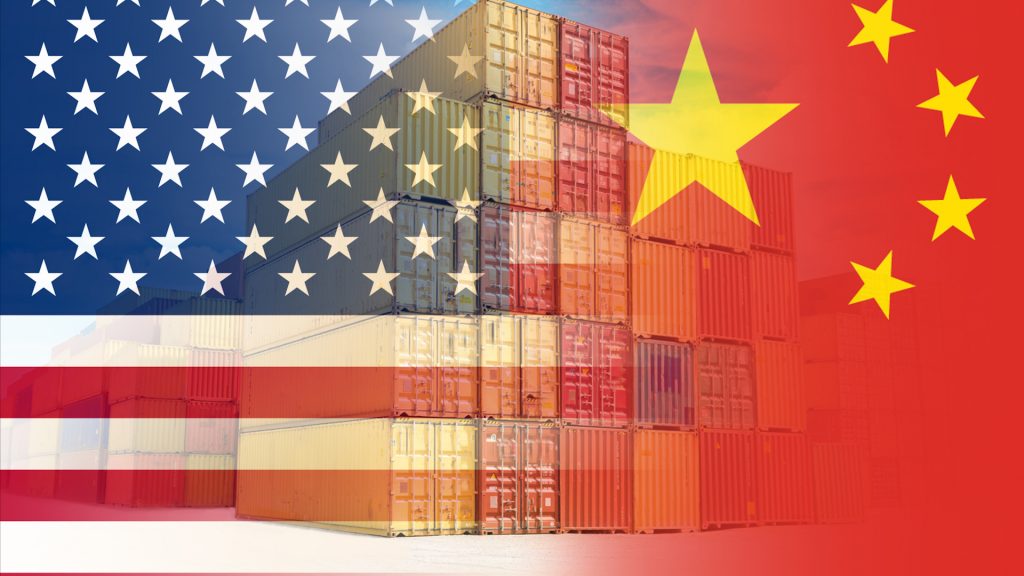US trade officials to meet with Chinese counterparts to talk tariff war

Top economic officials from the U.S. and China will meet in Switzerland this week to begin talks to ease tensions from the ongoing tariff war. U.S. Treasury Secretary Scott Bessent and Trade Representative Jamieson Greer will sit down with Chinese Vice Premier He Lifeng from May 9 to 12 in Geneva, marking the first high-level engagement between the two countries since President Donald Trump returned to office.
According to Bessent, the initial objective is de-escalation, not a sweeping trade agreement. He told Fox News the current tariffs — 145% on Chinese goods and 125% on U.S. exports — are economically unsustainable and equivalent to an embargo.
How did the trade war escalate to this point?
Since April, the Trump administration has imposed a broad range of tariffs targeting dozens of countries, including 25% duties on autos, steel and aluminum, and a baseline 10% tariff on most foreign goods. China responded with retaliatory tariffs, raising import duties on American products to 125%. The back-and-forth has strained supply chains, sparked volatility in financial markets and triggered concern over a broader global economic slowdown.
In response to mounting trade pressure, China’s central bank announced new monetary stimulus measures on Wednesday, May 7. These include planned interest rate cuts and increased liquidity to shore up its manufacturing sector, which has been hit hard by the trade standoff. Analysts described the move as targeted but symbolically timed ahead of the Geneva talks.
What are the expectations for the Switzerland discussions?
The talks are not expected to produce a comprehensive agreement soon. Instead, both delegations are preparing to explore pathways for scaling back tariffs and reestablishing trade cooperation. Sources familiar with the agenda said the talks may cover duties on specific products, U.S. export controls and the recent elimination of de minimis exemptions on low-value imports.
Bessent emphasized that any progress must start with reducing tensions. “We’ve got to de-escalate before we can move forward,” he said.
While maintaining a firm stance against what they call the U.S.’s abuse of tariffs, Chinese officials signaled openness to negotiations after reportedly weighing global expectations and domestic economic concerns. A foreign ministry spokesperson confirmed the meeting and stated that China “has decided to re-engage the U.S.”
What economic impacts are both countries facing?
Unbiased. Straight Facts.TM
Investment bank Nomura estimates China could lose up to 16 million jobs due to the ongoing U.S.-China trade war and sustained tariff pressure.
Economists warn that prolonged trade disruption could cost China 16 million jobs. Investment bank Nomura and other forecasters have revised down China’s 2025 economic growth outlook due to the damage caused by the tariff regime. In the U.S., businesses have rushed to import goods before higher rates take effect, temporarily widening the trade deficit despite Trump’s efforts to reduce it.
U.S. markets reacted positively to the news of the Geneva talks. Equity index futures rose shortly after the announcement, and stock markets in China and Hong Kong also saw gains. However, trade experts cautioned that any resolution would likely take months or longer.
How does this fit into the broader Trump trade agenda?
The Switzerland meeting comes amid a broader effort by the Trump administration to renegotiate trade agreements globally. Bessent said the White House is in talks with 17 major trading partners and could announce new deals in the coming weeks. Trump has expressed interest in reviewing offers from countries including the United Kingdom and Indonesia, focusing on lowering tariffs and reducing non-tariff barriers like subsidies.
The administration’s tariff strategy — intended to protect American industries and reduce the trade deficit — has instead fueled short-term market instability and supply chain disruptions. While the U.S. trade gap with China has narrowed, the overall deficit has increased as companies front-load imports to avoid new levies.
What are the prospects for long-term resolution?
Despite signs of engagement, several trade policy analysts remain cautious. Observers noted prior rounds of U.S.-China negotiations during Trump’s first term stretched for months without a lasting resolution.
Still, officials on both sides say the alternative to negotiation — continued economic strain — has become increasingly difficult to justify. The outcome of this weekend’s meeting in Geneva may determine whether a path forward exists or if the world’s two largest economies remain in conflict through the rest of 2025.





